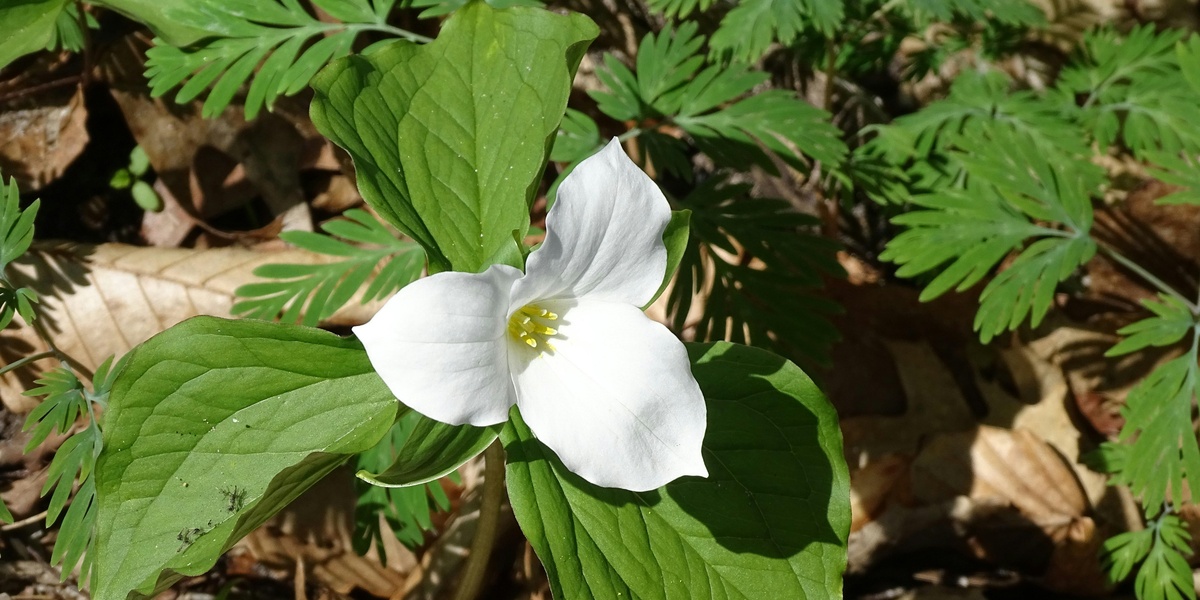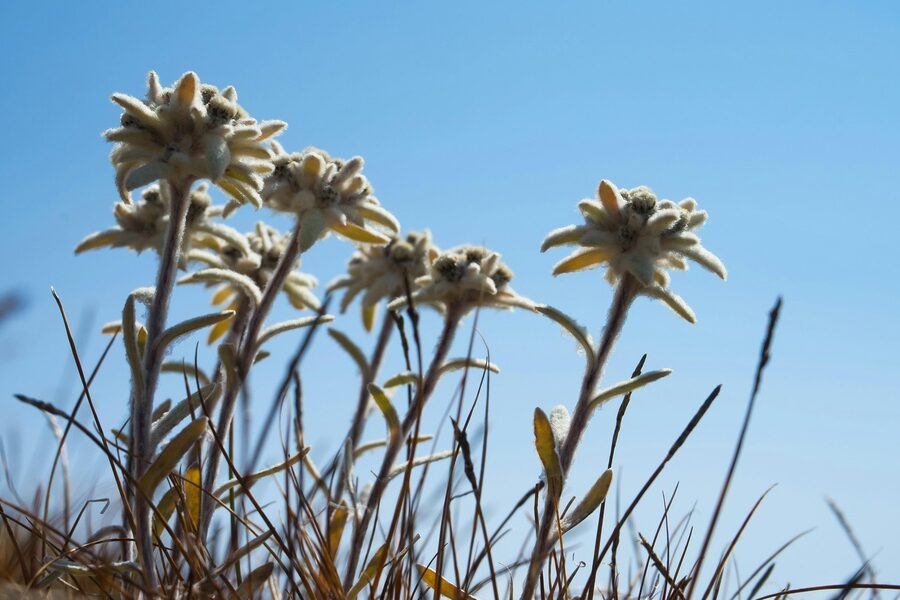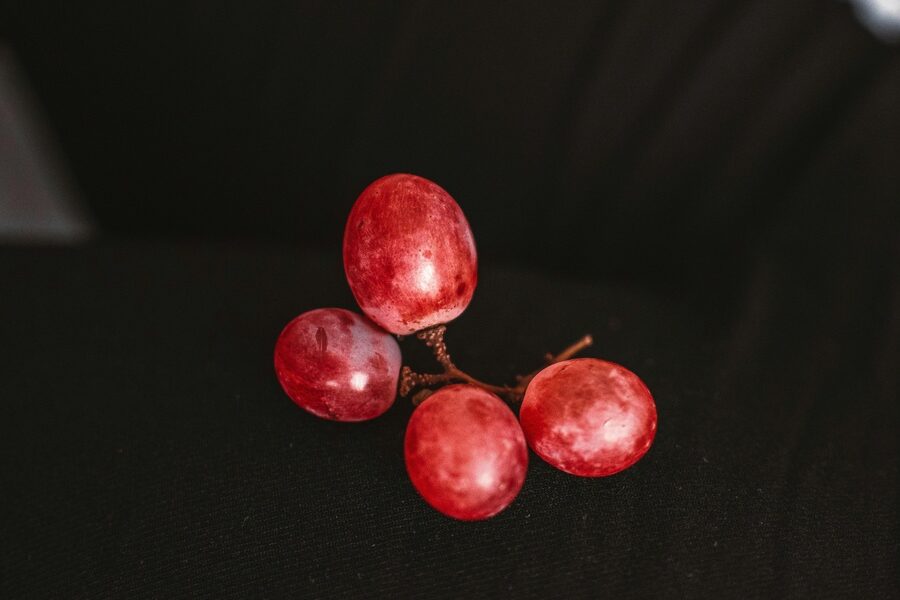Canada’s landscapes—from coastal dunes and Prairies to boreal forests and alpine meadows—host a wide variety of native blooms that change with the seasons and the habitat. This compact list focuses on species you’re likely to encounter on hikes, roadside stops, or in natural areas across provinces and eco-zones.
There are 68 Flowers of Canada, ranging from Bearberry to Yellow Lady’s Slipper; for each entry I list Scientific name,Bloom season,Distribution (provinces/eco-zones) so you can match sightings to season and region — you’ll find below.
How can I use this list to identify flowers in my province?
Start by filtering the Distribution column for your province or eco-zone, then narrow candidates by Bloom season; use the Scientific name to confirm with photos or a field guide and note habitat and color to match entries below.
When is the best time to see these wildflowers across Canada?
Timing varies: many southern and lowland species bloom in spring, alpine and northern species peak in summer, and some late bloomers appear in fall — check the Bloom season column below to plan visits by species and province.
Flowers of Canada
| Common name | Scientific name | Bloom season | Distribution (provinces/eco-zones) |
|---|---|---|---|
| White Trillium | Trillium grandiflorum | April–May | ON, QC |
| Blue Flag Iris | Iris versicolor | June–July | East of SK: MB, ON, QC, NB, NS, PE, NL |
| Pacific Dogwood | Cornus nuttallii | April–May | BC |
| Wild Rose | Rosa acicularis | June–July | All provinces except NL; also YT, NT |
| Western Red Lily | Lilium philadelphicum | June–July | BC, AB, SK, MB, ON, QC |
| Prairie Crocus | Pulsatilla nuttalliana | April–May | BC, AB, SK, MB, YT, NT, NU |
| Purple Pitcher Plant | Sarracenia purpurea | June–July | All provinces except BC; also NT |
| Pink Lady’s Slipper | Cypripedium acaule | May–July | All provinces except BC; also NT |
| Mayflower | Epigaea repens | April–May | East of SK: MB, ON, QC, NB, NS, PE, NL |
| Purple Violet | Viola cucullata | May–June | East of MB: ON, QC, NB, NS, PE, NL |
| Fireweed | Chamerion angustifolium | June–September | All provinces and territories |
| Mountain Avens | Dryas integrifolia | June–July | BC, AB, MB, QC, NL, YT, NT, NU |
| Purple Saxifrage | Saxifraga oppositifolia | April–June | BC, AB, ON, QC, NL, YT, NT, NU |
| Bunchberry | Cornus canadensis | May–July | All provinces and territories |
| Canada Anemone | Anemone canadensis | May–July | All provinces except NL |
| Common Milkweed | Asclepias syriaca | June–August | East of AB: SK, MB, ON, QC, NB, NS, PE |
| Black-eyed Susan | Rudbeckia hirta | June–September | All provinces |
| Wild Columbine | Aquilegia canadensis | May–July | East of AB: SK, MB, ON, QC, NB, NS |
| Common Dandelion | Taraxacum officinale | April–October | All provinces and territories |
| Tall Buttercup | Ranunculus acris | May–August | All provinces and territories |
| Canada Thistle | Cirsium arvense | July–September | All provinces and territories |
| Chicory | Cichorium intybus | July–October | All provinces except NL |
| Common Yarrow | Achillea millefolium | June–September | All provinces and territories |
| Queen Anne’s Lace | Daucus carota | June–September | All provinces except SK, AB |
| Red Clover | Trifolium pratense | May–September | All provinces and territories |
| Wild Strawberry | Fragaria virginiana | May–June | All provinces and territories |
| Canada Goldenrod | Solidago canadensis | August–October | All provinces and territories |
| New England Aster | Symphyotrichum novae-angliae | August–October | East of AB: SK, MB, ON, QC, NB, NS, PE |
| Joe Pye Weed | Eutrochium maculatum | July–September | All provinces except NL |
| Indian Paintbrush | Castilleja miniata | May–August | BC, AB, SK, MB, YT, NT |
| Bloodroot | Sanguinaria canadensis | April–May | East of SK: MB, ON, QC, NB, NS, PE |
| Dutchman’s Breeches | Dicentra cucullaria | April–May | East of SK: MB, ON, QC, NB, NS, PE |
| Trout Lily | Erythronium americanum | April–May | East of MB: ON, QC, NB, NS, NL |
| Skunk Cabbage | Symplocarpus foetidus | March–April | East of MB: ON, QC, NB, NS |
| Twinflower | Linnaea borealis | June–August | All provinces and territories |
| Bluebead Lily | Clintonia borealis | May–June | All provinces except BC |
| Bearberry | Arctostaphylos uva-ursi | April–June | All provinces and territories |
| Cow Parsnip | Heracleum maximum | June–August | All provinces and territories |
| Marsh Marigold | Caltha palustris | April–June | All provinces and territories |
| Labrador Tea | Rhododendron groenlandicum | June–July | All provinces and territories |
| Harebell | Campanula rotundifolia | June–September | All provinces and territories |
| Jewelweed | Impatiens capensis | July–September | All provinces except AB |
| Wild Bergamot | Monarda fistulosa | July–August | All provinces except NL |
| Wild Ginger | Asarum canadense | April–May | East of SK: MB, ON, QC, NB, NS |
| Yellow Lady’s Slipper | Cypripedium parviflorum | May–July | All provinces and territories |
| White Water Lily | Nymphaea odorata | June–September | East of AB: SK, MB, ON, QC, NB, NS, PE, NL |
| Oxeye Daisy | Leucanthemum vulgare | June–August | All provinces and territories |
| Purple Loosestrife | Lythrum salicaria | July–September | All provinces except AB, SK |
| Cardinal Flower | Lobelia cardinalis | July–September | East of MB: ON, QC, NB, NS, PE |
| Swamp Milkweed | Asclepias incarnata | July–August | East of AB: SK, MB, ON, QC, NB, NS, PE |
| Turtlehead | Chelone glabra | August–September | East of SK: MB, ON, QC, NB, NS, PE, NL |
| Spring Beauty | Claytonia caroliniana | April–May | East of SK: MB, ON, QC, NB, NS, PE, NL |
| Common Butterwort | Pinguicula vulgaris | June–July | All provinces and territories |
| Round-leaved Sundew | Drosera rotundifolia | June–August | All provinces and territories |
| Saskatoon Berry | Amelanchier alnifolia | April–June | All provinces and territories |
| Red Osier Dogwood | Cornus sericea | June–July | All provinces and territories |
| Peary’s Poppy | Papaver radicatum | June–August | NT, NU |
| Purple Prairie Clover | Dalea purpurea | June–August | BC, AB, SK, MB, ON |
| Blazing Star | Liatris spicata | July–August | ON |
| False Solomon’s Seal | Maianthemum racemosum | May–June | All provinces and territories |
| Self-heal | Prunella vulgaris | June–September | All provinces and territories |
| Tall Lungwort | Mertensia paniculata | May–July | All provinces and territories except PE |
| Viper’s Bugloss | Echium vulgare | June–September | BC, ON, QC, NB, NS |
| Bird’s-foot Trefoil | Lotus corniculatus | June–September | All provinces except SK |
| Starflower | Lysimachia borealis | May–June | All provinces and territories |
| Common St. John’s Wort | Hypericum perforatum | June–August | BC, ON, QC, NB, NS, PE, NL |
| Foamflower | Tiarella cordifolia | May–June | East of MB: ON, QC, NB, NS |
| Wood Anemone | Anemone quinquefolia | April–June | All provinces except NL |
Images and Descriptions

White Trillium
Ontario’s provincial flower, this iconic woodland plant has a single large, three-petaled white flower that fades to pink with age. ID tip: Its three broad leaves are arranged in a whorl below the flower. It is slow-growing, taking up to 10 years to flower from seed.
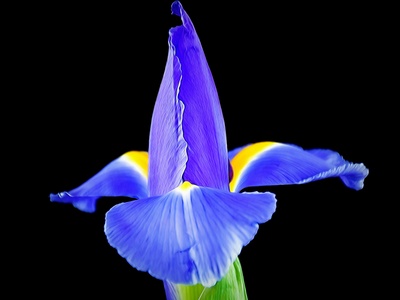
Blue Flag Iris
Quebec’s floral emblem, found in wetlands and shorelines. It has striking violet-blue flowers with yellow and white markings on the falls. ID tip: Look for its sword-like leaves and intricate, three-parted flower structure. The root is poisonous if ingested.
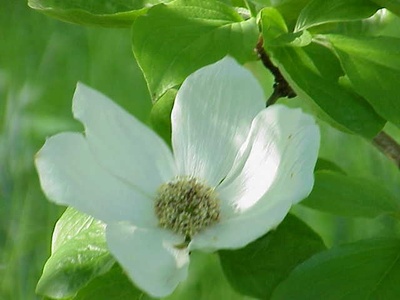
Pacific Dogwood
The floral emblem of British Columbia, this small tree produces large, showy white bracts that look like petals. ID tip: The true flowers are the small greenish cluster in the center of the four to six large white bracts. It can sometimes bloom a second time in the fall.

Wild Rose
Alberta’s provincial flower, this thorny shrub features fragrant, five-petaled pink flowers and produces nutritious red hips in the fall. ID tip: Identify it by its prickly stems and delicate pink blossoms. The rose hips are very high in Vitamin C.
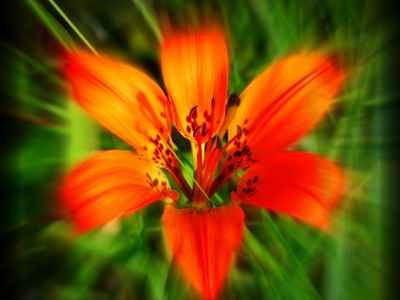
Western Red Lily
The provincial flower of Saskatchewan, this stunning lily has upward-facing, bright reddish-orange flowers with dark spots. ID tip: Unlike many lilies, its flowers face the sky. It is a protected species in several provinces and should not be picked.
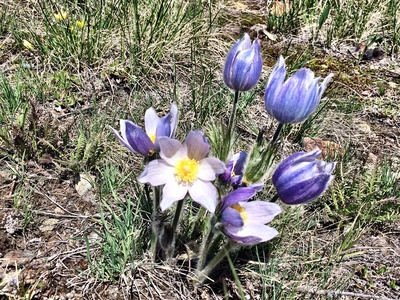
Prairie Crocus
One of the first spring flowers on the prairies and Manitoba’s emblem. It has beautiful lavender to whitish, cup-shaped flowers covered in soft hairs. ID tip: The entire plant is fuzzy, which protects it from cold. The flowers appear before the leaves fully emerge.

Purple Pitcher Plant
The unique floral emblem of Newfoundland and Labrador. This carnivorous plant has nodding, globe-shaped, deep red-purple flowers on a leafless stalk. ID tip: Look for its distinctive pitcher-shaped leaves that trap insects. It gets its nutrients from digesting trapped prey.
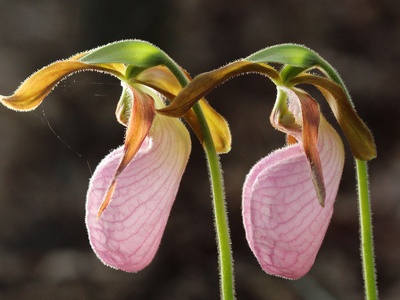
Pink Lady’s Slipper
The provincial flower of Prince Edward Island, this wild orchid has a single, large pouch-like petal that is deep pink with reddish veins. ID tip: The distinctive inflated “slipper” or “pouch” is unmistakable. It relies on a specific soil fungus to survive.

Mayflower
Nova Scotia’s floral emblem, this low, trailing plant has clusters of small, fragrant, pink or white flowers. ID tip: It is an evergreen ground cover found in woodlands, often blooming very early through late-melting snow. It’s also known as trailing arbutus.
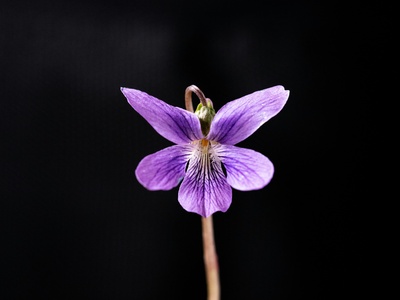
Purple Violet
The provincial flower of New Brunswick, this common violet has heart-shaped leaves and deep blue-purple flowers with a white throat. ID tip: Look for its classic five-petaled violet shape on leafless stalks. Many violet species are edible and rich in vitamins.
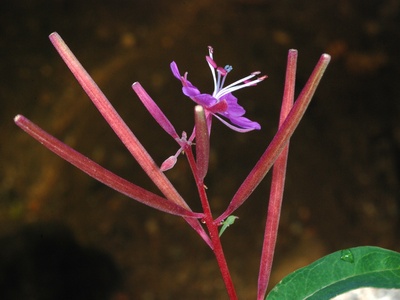
Fireweed
The floral emblem of the Yukon. Tall spikes of vibrant pink-purple flowers appear in disturbed areas, especially after a fire. ID tip: Flowers bloom from the bottom of the stalk upwards. Its fluffy seeds travel on the wind, making it a pioneer species.
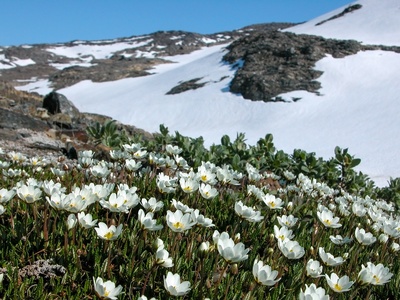
Mountain Avens
The floral emblem of the Northwest Territories. This low-growing arctic and alpine plant forms dense mats with solitary, creamy-white, buttercup-like flowers. ID tip: Look for its small, leathery, dark green leaves with white fuzzy undersides.
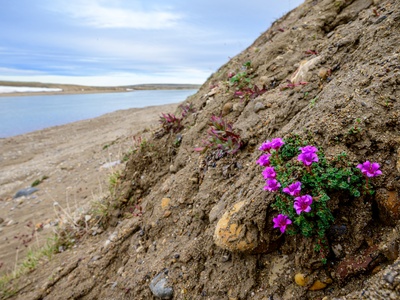
Purple Saxifrage
Nunavut’s territorial flower and one of the earliest arctic bloomers. It forms low mats or cushions with small, bright purple-pink, star-shaped flowers. ID tip: It often grows directly on rock or gravel, adding a splash of colour to harsh landscapes.

Bunchberry
A low-lying groundcover in forests across Canada. It features a whorl of leaves with a central flower cluster surrounded by four white petal-like bracts. ID tip: It looks like a miniature dogwood tree. In fall, it produces a cluster of bright red berries.
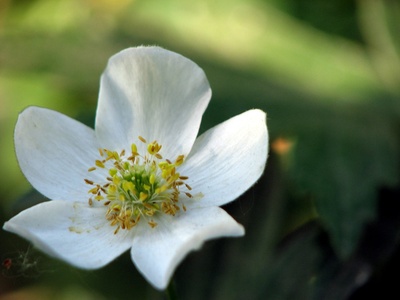
Canada Anemone
This plant spreads to form dense groundcover in moist meadows and open woods, producing single, clear white flowers with yellow centers. ID tip: Identify it by its deeply divided leaves and single white flower per stalk. It can be an aggressive spreader in gardens.

Common Milkweed
Known for its role as the host plant for monarch butterfly caterpillars. It has large, drooping clusters of fragrant, pinkish-purple, star-shaped flowers. ID tip: Break a leaf to see the milky white sap for which it is named. The flowers have a uniquely complex structure.

Black-eyed Susan
A cheerful, iconic prairie wildflower with bright yellow-orange, daisy-like rays surrounding a dark brown central cone. ID tip: The coarse, hairy leaves and stems are a key feature. It is a biennial, meaning it typically lives for two years.

Wild Columbine
This elegant woodland flower has intricate red and yellow, bell-like blossoms with upward-pointing spurs that hold nectar. ID tip: Its unique shape is unmistakable, designed to attract hummingbirds. The name “Aquila” is Latin for eagle, referring to the spur’s talon-like shape.
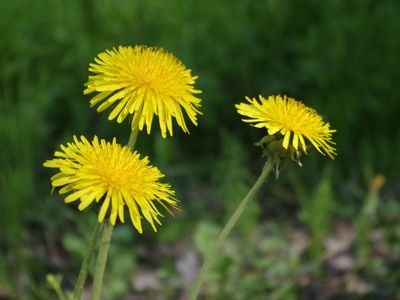
Common Dandelion
A familiar naturalized “weed” in lawns and fields. It features a bright yellow flower head composed of many small ray florets on a hollow, leafless stalk. ID tip: Its deeply toothed leaves give it the name “dent-de-lion” or “lion’s tooth.” All parts are edible.
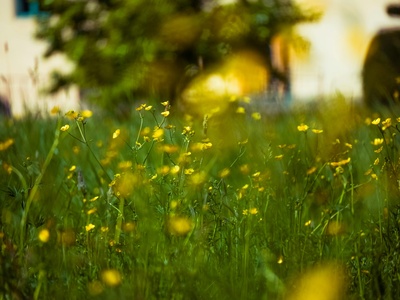
Tall Buttercup
A common, naturalized meadow flower with glossy, bright yellow, five-petaled flowers. ID tip: The shiny, almost waxy appearance of its petals is a good identifier. Despite their cheerful look, all buttercups are toxic to livestock if eaten.

Canada Thistle
An aggressive, naturalized perennial with small, light purple or pink flower heads and spiny, sharp leaves. ID tip: Unlike bull thistle, its flower heads are smaller and lack spiny bracts at the base. It spreads primarily by its deep root system.

Chicory
This naturalized roadside plant has beautiful, sky-blue, daisy-like flowers that famously open in the morning and close later in the day. ID tip: Look for the square, stiff, branching stems and bright blue flowers. Its root is often roasted as a coffee substitute.

Common Yarrow
Features flat-topped clusters of many small, white (sometimes pinkish) flowers and fern-like, feathery leaves. ID tip: The aromatic, lacy foliage is a key characteristic. It has a long history of use in traditional medicine to stop bleeding.

Queen Anne’s Lace
Also known as wild carrot, this naturalized plant has large, flat-topped, lace-like clusters of tiny white flowers, often with a single dark purple floret in the center. ID tip: Look for the single dark floret and the fine, carrot-scented, ferny leaves.

Red Clover
A common naturalized plant in fields and lawns, with globular, magenta-pink flower heads. ID tip: Its leaves are trifoliate (in threes), each leaflet often having a pale V-shaped mark. It is a valuable plant for fixing nitrogen in the soil.
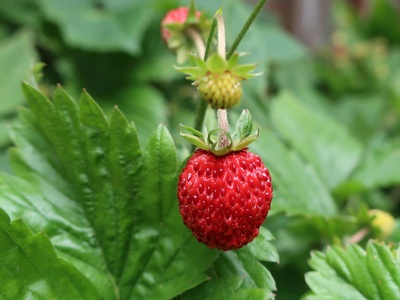
Wild Strawberry
A low-growing plant with familiar toothed, three-part leaves and small, five-petaled white flowers with a yellow center. ID tip: It looks like a small garden strawberry plant. It produces tiny, but intensely flavourful, edible red berries.
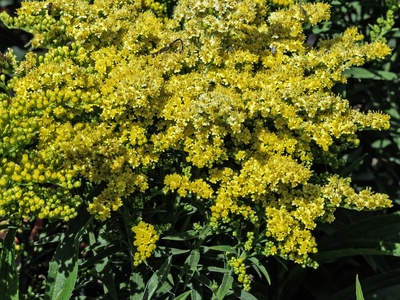
Canada Goldenrod
A common late-season wildflower that forms dense patches with plume-like, arching branches of tiny, bright yellow flowers. ID tip: Its pyramid-shaped flower cluster is a key identifier. It is often wrongly blamed for hay fever, which is caused by ragweed.
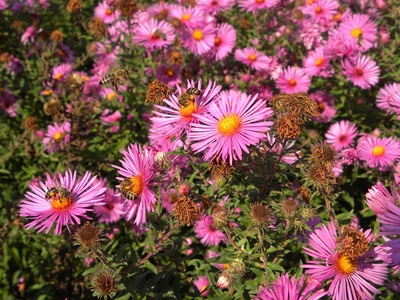
New England Aster
A tall, vibrant aster with numerous daisy-like flowers that have rich purple-blue rays and a bright yellow-orange center disk. ID tip: Its stem is hairy and its leaves clasp the stem. It’s a critical late-season nectar source for pollinators.

Joe Pye Weed
A tall wetland plant with large, dome-shaped clusters of fuzzy, mauve-pink flowers. ID tip: Look for its purple-spotted stems and whorled leaves. It is a magnet for butterflies and other pollinators in late summer.
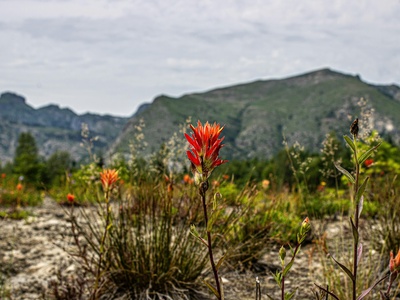
Indian Paintbrush
This stunning western wildflower gets its colour not from its flowers, but from brilliant red-orange bracts that surround the small, inconspicuous greenish flowers. ID tip: It looks like a brush dipped in bright paint. It is partially parasitic on the roots of other plants.
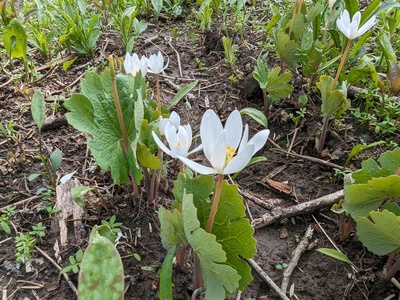
Bloodroot
An early spring woodland ephemeral with a single, pristine white flower that has 8 to 16 petals. ID tip: The flower emerges wrapped in a single, large, deeply lobed leaf. It gets its name from the blood-red sap in its root.
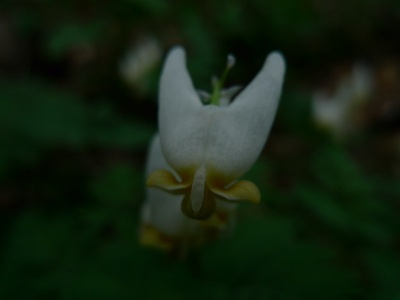
Dutchman’s Breeches
A delicate woodland flower with unique, white, pantaloon-shaped blossoms dangling from a leafless, arching stalk. ID tip: The flowers look exactly like tiny pairs of upside-down pants. The seeds are spread by ants in a process called myrmecochory.

Trout Lily
A spring ephemeral of eastern forests with a single, nodding yellow flower and mottled leaves that resemble a brook trout’s skin. ID tip: The distinctive spotted leaves are a key feature. Colonies can be hundreds of years old, but each plant takes years to mature.
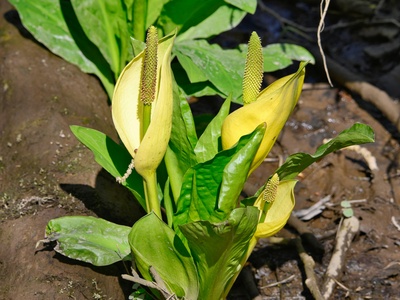
Skunk Cabbage
One of Canada’s earliest flowering plants, found in wetlands. A mottled, purplish-brown, hood-like spathe encloses a knob of tiny flowers. ID tip: Its pungent odour when bruised is unmistakable. The plant can generate heat to melt snow around it.

Twinflower
A delicate, creeping woodland vine with pairs of small, fragrant, pinkish-white, bell-shaped flowers that hang from a Y-shaped stalk. ID tip: The paired, nodding bells are a perfect identifier. It was the favourite flower of botanist Carl Linnaeus, for whom it is named.

Bluebead Lily
Found in cool, moist woods, it has a cluster of nodding, pale yellow, lily-like flowers atop a stalk rising from broad, glossy basal leaves. ID tip: In late summer, look for its brilliant, porcelain-blue berries, which are inedible.
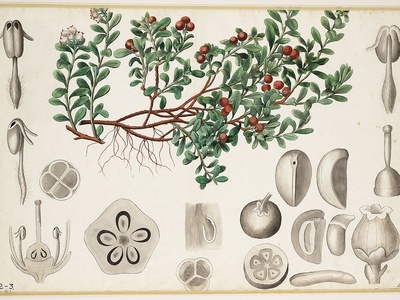
Bearberry
A low, trailing evergreen shrub found in sandy or rocky soils. It has small, waxy, pinkish-white, urn-shaped flowers. ID tip: Its mat-forming habit and tough, leathery leaves are distinctive. It produces bright red berries that are a key food for bears.

Cow Parsnip
A very large native plant with huge, umbrella-like clusters of tiny white flowers. ID tip: Its massive size and large, lobed leaves distinguish it. Unlike the invasive Giant Hogweed, its sap is only a mild skin irritant for most people.
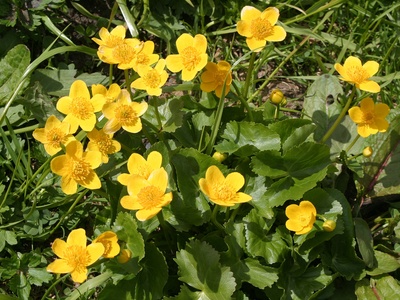
Marsh Marigold
Brightens wetlands in early spring with shiny, vibrant yellow, buttercup-like flowers and kidney-shaped leaves. ID tip: Look for it in standing water and mucky soil. Despite its name, it’s not a true marigold but a member of the buttercup family.

Labrador Tea
A low shrub of bogs and wet forests with round clusters of small, white flowers. ID tip: The undersides of its leathery leaves are covered in dense, rusty-brown hairs. The leaves have long been used to make a herbal tea rich in Vitamin C.
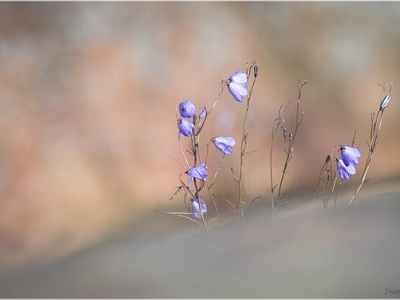
Harebell
A delicate plant with slender stems and nodding, bell-shaped, purplish-blue flowers. ID tip: Look for it in dry, open, often rocky or sandy places. Its round basal leaves wither early, while the stem leaves are very narrow. Also known as Bluebells of Scotland.

Jewelweed
Found in moist, shady spots, it has charming, cornucopia-shaped, orange-yellow flowers with reddish spots. ID tip: Its ripe seed pods explode when touched, hence the name “touch-me-not.” The sap is a traditional remedy for poison ivy rash.
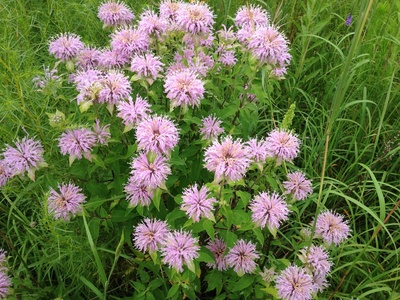
Wild Bergamot
A prairie and open woods native with showy, globular clusters of lavender-pink, tubular flowers. ID tip: It’s a member of the mint family, with a square stem and aromatic, oregano-like scent when the leaves are crushed. A favourite of bees and butterflies.

Wild Ginger
A low-growing woodland groundcover with large, heart-shaped leaves that hide a single, maroon-red, bell-shaped flower at ground level. ID tip: You have to lift the leaves to find the unusual, three-lobed flower. It was pollinated by flies and gnats.

Yellow Lady’s Slipper
A beautiful and widespread wild orchid. It features a bright yellow, pouch-like petal and spiraling, greenish-brown to purplish sepals and petals. ID tip: The inflated yellow “slipper” is its most prominent feature. It is a long-lived plant, sometimes reaching over 50 years.

White Water Lily
An aquatic plant with large, floating leaves and a beautiful, fragrant, many-petaled white flower that opens in the morning and closes in the afternoon. ID tip: Look for its round floating leaves with a single V-shaped notch. The thick rootstocks anchor it in the mud.
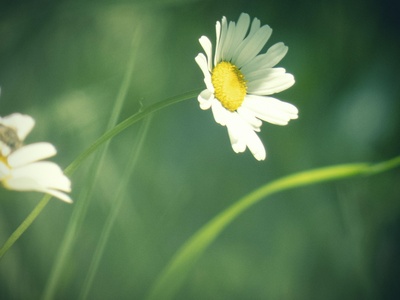
Oxeye Daisy
A classic naturalized daisy found in fields and roadsides, with a white-rayed, yellow-centered flower head on a single stem. ID tip: It is larger and taller than the common English daisy. It has become an invasive species in many pasturelands.

Purple Loosestrife
A tall, aggressive wetland invasive with impressive spikes of bright magenta-purple flowers. ID tip: Its square stem and flowers with 5-7 petals are key identifiers. It is notorious for outcompeting native wetland vegetation.
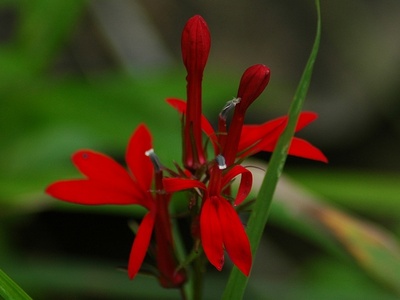
Cardinal Flower
Named for its incredibly intense, pure red colour, this plant has spikes of vibrant, tubular flowers that attract hummingbirds. ID tip: The brilliant scarlet colour is unlike any other native wildflower. It grows in wet areas like stream banks.
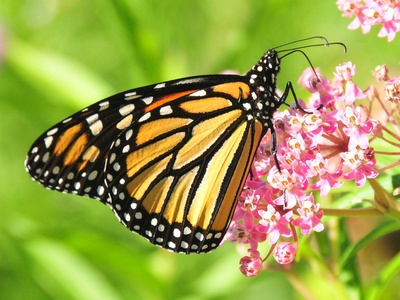
Swamp Milkweed
A wetland milkweed species with smaller, more intricate, deep pink to mauve flowers in flat-topped clusters. ID tip: Unlike common milkweed, its leaves are narrower and it prefers wet soil. It is also a vital host plant for monarch butterflies.

Turtlehead
This wetland plant has dense spikes of white or pink-tinged, tubular flowers that resemble a turtle’s head with its mouth open. ID tip: The unique flower shape is a dead giveaway. It is the host plant for the Baltimore Checkerspot butterfly.
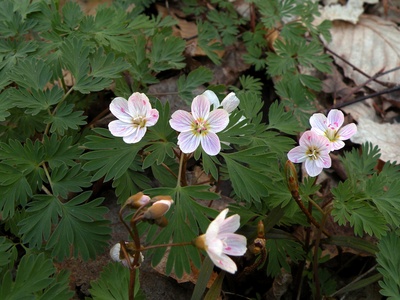
Spring Beauty
An early spring woodland flower with five-petaled, white to pale pink flowers marked with darker pink veins. ID tip: Look for the delicate pink stripes on the petals. Its starchy underground tuber is edible and was a food source for Indigenous peoples.

Common Butterwort
A small carnivorous plant of fens and bogs with a basal rosette of greasy, yellow-green leaves and a single, violet-like purple flower on a leafless stalk. ID tip: The slimy feel of the leaves, which trap insects, is a key trait. The flower looks like a violet.
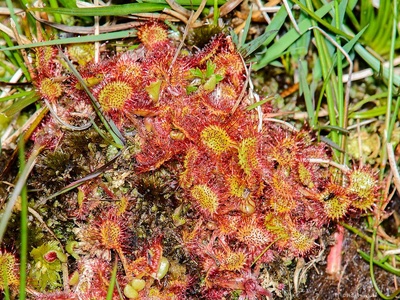
Round-leaved Sundew
Another carnivorous plant of bogs, it has a rosette of round, reddish leaves covered in sticky, dew-like tentacles that trap insects. ID tip: The glistening red “dewdrops” on its leaves are its most telling feature. The small white or pink flowers rise on a stalk above the leaves.

Saskatoon Berry
A widespread native shrub that produces masses of five-petaled white flowers in early spring, often before its leaves emerge. ID tip: Its profuse white blossoms are one of the first signs of spring in many regions. It produces delicious, edible, dark purple berries.
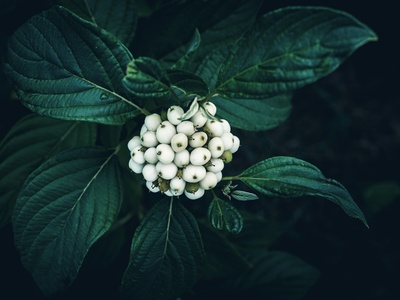
Red Osier Dogwood
A common shrub in wet areas, easily identified in winter by its bright red stems. In summer, it has flat-topped clusters of creamy-white flowers. ID tip: The brilliant red bark on young stems is the best identifier. It produces white berries that are eaten by birds.

Peary’s Poppy
An arctic poppy adapted to the harshest conditions. It has delicate, cup-shaped, yellow flowers on hairy stems. ID tip: This is one of the most northerly growing vascular plants in the world. Its flowers are heliotropic, tracking the sun across the sky.

Purple Prairie Clover
A key prairie native with unique flower heads where tiny purple florets with orange stamens bloom in a wreath-like ring from the bottom up. ID tip: The cylindrical cone of flowers with the ring of active blooms is unmistakable. It is a legume that enriches the soil.
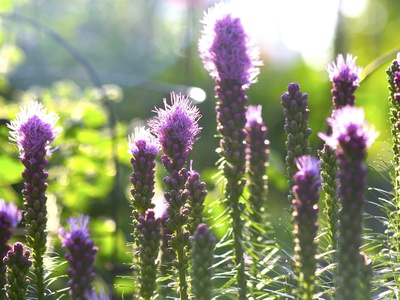
Blazing Star
Also known as dense blazing star or marsh gayfeather, this plant has tall, dramatic spikes of fuzzy, purple-pink flower heads. ID tip: Unlike many spiked flowers, the blossoms open from the top down. It is a magnet for monarch butterflies during their fall migration.
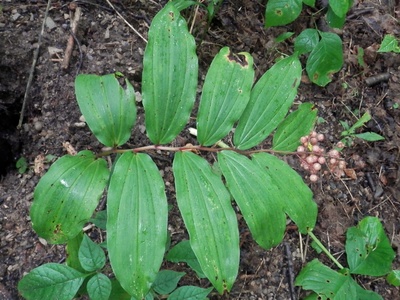
False Solomon’s Seal
This woodland plant has an arching stem with alternating leaves and a feathery, pyramid-shaped cluster of tiny, fragrant, creamy-white flowers at the tip. ID tip: Its flowers are at the stem tip, unlike true Solomon’s Seal which has flowers dangling underneath.
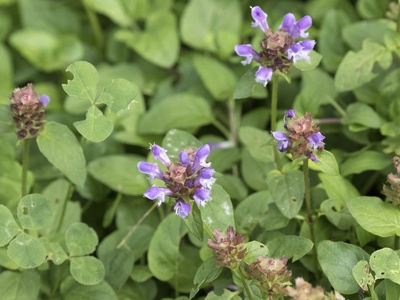
Self-heal
A low-growing plant in the mint family, common in lawns and disturbed areas. It has a short, dense spike of purplish, hood-like flowers. ID tip: Look for the stubby, club-like flower head. As its name suggests, it has a long history of use in herbal medicine.
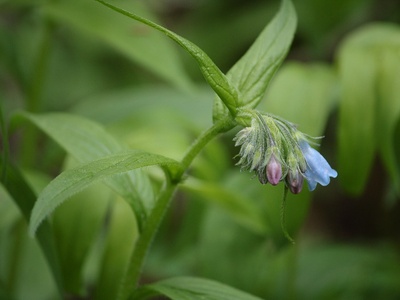
Tall Lungwort
Found in moist woods and meadows, this plant features drooping clusters of beautiful, bell-shaped flowers that are pink in bud and turn sky blue as they open. ID tip: The transition of flower colour from pink to blue is a key feature.
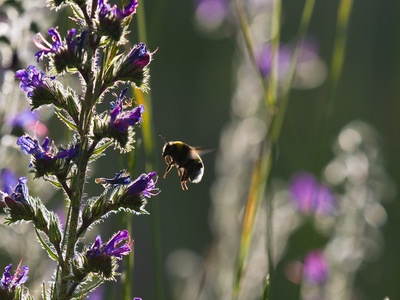
Viper’s Bugloss
A very bristly, naturalized biennial with spikes of brilliant blue, trumpet-shaped flowers. ID tip: The stiff, hairy bristles covering the plant and the vibrant blue flowers with pink stamens are hard to miss. It is also known as Blueweed.
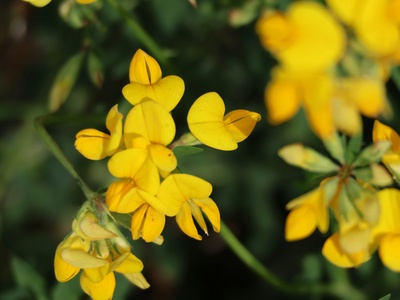
Bird’s-foot Trefoil
A low-growing, naturalized legume with clusters of bright yellow, pea-like flowers, often tinged with red. ID tip: The flower clusters and three-part leaves resemble a bird’s foot, hence the name. It is commonly planted for forage and erosion control.
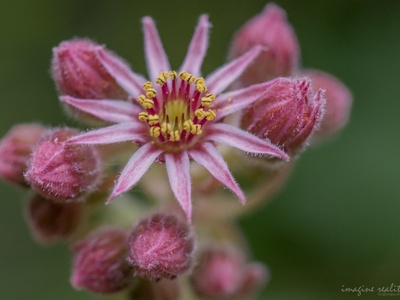
Starflower
A delicate woodland plant with a whorl of pointed leaves at the top of its stem, from which one or two small, white, star-shaped flowers arise. ID tip: The perfect symmetry of the leaf whorl and the seven-petaled, star-like flower is distinctive.
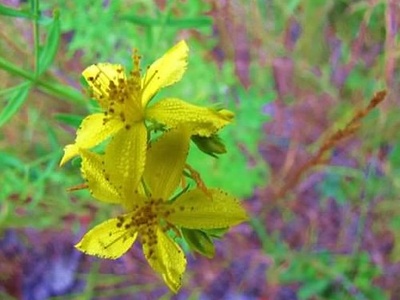
Common St. John’s Wort
A naturalized plant of sunny, disturbed sites with clusters of bright yellow, five-petaled flowers. ID tip: Hold a leaf up to the light to see translucent dots, which give it the species name “perforatum.” The black dots on petals release a red pigment.
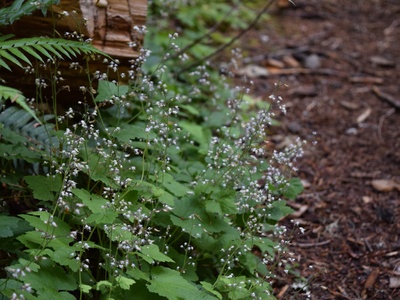
Foamflower
A woodland groundcover with fuzzy, heart-shaped leaves and airy, spike-like clusters of tiny, delicate, white or pinkish flowers. ID tip: The flower spike looks like a frothy foam, giving the plant its common name. It spreads by sending out runners.

Wood Anemone
A small, delicate spring ephemeral with a single white (sometimes pink-tinged) flower that nods above a whorl of three deeply-cut leaves. ID tip: It has a very simple, elegant structure with one flower per plant. The flowers close at night and on cloudy days.
